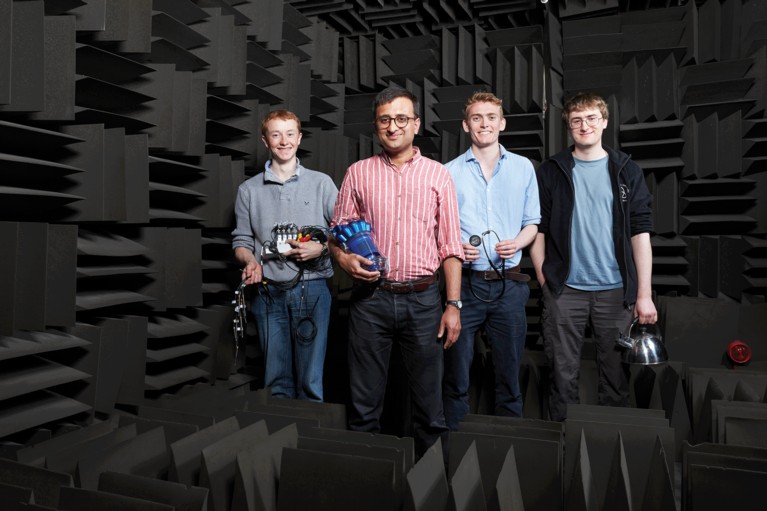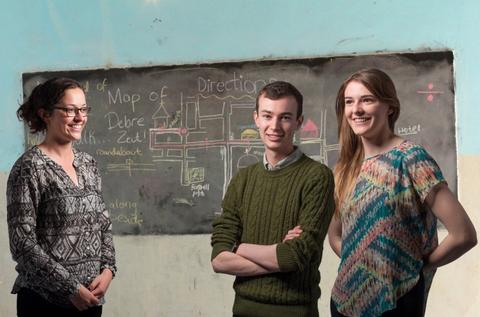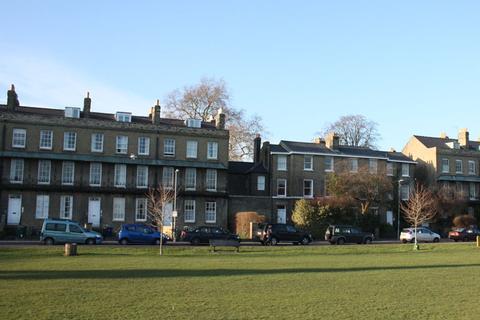Anurag Agarwal – Aeroacoustics: Melody & Cacophony
Aeroacoustics is the science of sound induced by the flow of air; initial research in the field was motivated by the need to reduce aircraft noise.

This was the subject of my research work when I first came to Cambridge as a post-doctoral researcher and I worked on a project to develop a ‘silent’ aircraft. This led to a conceptual design of a flying-wing airframe that we predicted would be significantly quieter than traditional aircraft. NASA is now using our design to construct the next generation of quiet aircraft.
Aircraft noise continued to be my main area of research, but it all changed about five years ago when my wife said, ‘you do all this work on aircraft noise ... why don’t you do something useful and reduce the noise from my vacuum cleaner?’ By a strange coincidence Dyson approached us just a week later to discuss ways of reducing noise from theirs. This provided an opportunity to work on a new application of aeroacoustics and led to our first collaborative project with Dyson. Over time our relationship has progressed with two further projects, one on noise from fans and another on that from hand dryers.
Aeroacoustics is not restricted to reduction of noise. One of my students, Ross Henrywood, recently worked on understanding the whistling noise made by a steam kettle. At first glance it appears to be a mundane problem, but it had not been solved for over 100 years and it took the expertise of a brilliant student to unravel the mysteries of sounds created by turbulent flow through the kettle. He was able to pinpoint two separate mechanisms that specifically cause a kettle to whistle, rather than make the rushing noise a flow might create in other household items, such as a hair dryer.
Apart from reducing and understanding sound, we are also using aeroacoustics for beneficial purposes. I recently discovered that I am allergic to dust mites. The allergy manifested itself in the form of a wheezing sound. I wanted to understand the physical mechanism of wheezing but was surprised to find that this problem had not been solved. A wheeze could be symptomatic of a number of medical conditions, such as asthma, bronchial stenosis or lung cancer. Current diagnosis depends on a doctor interpreting sounds from a stethoscope and it is hard to separate reliably one type of wheeze from another. A better understanding of how sounds from these medical conditions are produced would solve this problem.
This led to two new collaborative projects: one with my PhD student Alastair Gregory, and Edwin Chilvers and Pasupathy Sivasothy at Addenbrooke’s looking at wheezing in lungs; the second with my PhD student Ed Kay and Len Shapiro at Papworth, on sounds from the human heart. Heart and lung diseases produce characteristic sounds that can be picked up by a stethoscope, the design of which has not changed significantly since it was invented in 1816, almost two centuries ago! We want to understand the causes of these sounds with the ultimate aim of developing an intelligent stethoscope for the twenty-first century that is capable of making automatic diagnoses.
It is interesting to note that as the size of the application reduces, the frequency with which it is encountered increases. We normally only occasionally hear aircraft but a heart beats every second. Given the large range and ubiquitous nature of the applications of aeroacoustics, there should be many more interesting problems left to explore.
These research projects would not have been possible without my brilliant students. This reminds me of a very influential awards acceptance speech in which the speaker said ‘the best way to do good research is to identify good students and give them interesting problems’. The speaker was Shôn Ffowcs Williams, our former Master.


